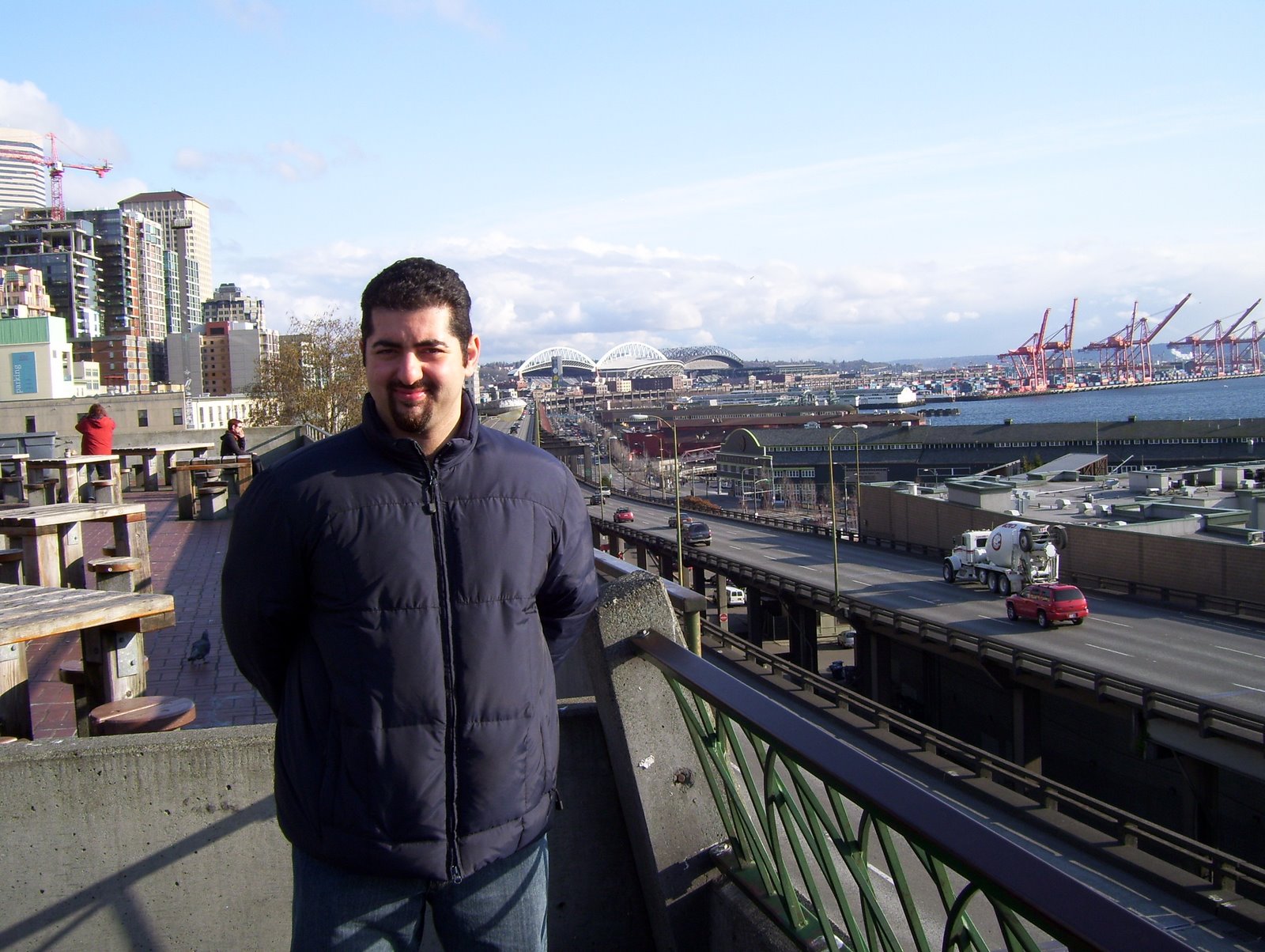




I went to the lovely city of Seattle to attend my first Starbucks (SBUX) shareholder meeting. This particular meeting was highly anticipated because of Howard Schultz. After leaving the CEO helm, only to see a downward spiral in SBUX's share price, Mr. Schultz returned and was greeted as an anointed savior. My friend said he looked like a cross between Pat Riley from his L.A. days and a Sopranos character, and he meant it as a compliment. Mr. Schultz does come across as a street-smart, wiry Mafia guy who was born to lead. (His slicked-back hair and nice suits draw comparisons to Pat Riley, another man from humble origins.)
First, let's talk about Seattle: the city is clean, fun, and mid-sized. I wanted to spend some time seeing the city, so I planned a three-day trip. The first two days, I felt like I was in a ghost town, because after being in San Jose, which has twice the population, Seattle felt tiny at just 500,000 people. On the other hand, the upside of fewer people is a better ability to control the local environment. As a result of conservation education and being so close to several lakes and near Puget Sound, Seattle's air feels noticeably clean and healthy. Indeed, one look at the view around Puget Sound, and you can't help but relax. Larger cities often forget that they are virtually concrete and asphalt fortresses, and spending a few days in Seattle proves that modern urban living and the environment can harmoniously co-exist.
Besides the cleanliness and beautiful lakes, Seattle distinguishes itself by having no state income tax. While that does seem to reduce government spending, it also results in making some cities, like Bellevue, into designated shopping mall areas and not much else ("Old Bellevue" is one unexciting, short block). Thus far, the retail businesses have left plenty of land for other uses, and with a sales tax of around 9% generating significant revenue, it seems reasonable to assume Seattle will continue to welcome retail establishments.
I would suggest skipping Bellevue, as well as the Space Needle (Seattle's version of Toronto's CN Tower, allowing visitors a bird's-eye of the city). After Chicago's Sears Tower, the Space Needle seemed unexciting and smallish to me. Instead, spend your time walking up and down "The Ave" near the University of Washington (don't miss the majestic George Washington statue near Red Square) and Broadway Street, Washington's version of Berkeley's Telegraph Street. I had a fantastic time walking up and down the Ave and Broadway.
The other "touristy" areas are Pike's Place, Pioneer Square, and the International District, all within walking distance from each other. The "original" Starbucks is at the Pike's Place, and was fun to see, old logo and all. Pioneer Square has an interesting memorial dedicated to firefighters who died in the line of duty and a few bars and shops, but not much else. A few blocks away are a small Chinatown and Little Saigon (after the trouble San Jose has had with this name, I chuckled at how common the "Saigon" name seems elsewhere). Neither district impressed me much, as they consisted of only a few blocks. Other than good restaurants--including one that sold a delicious durian milkshake--the "Asian" districts didn't seem to offer anything unique.
Seattle owes quite a bit to its Asian population--one of the first Boeing designers was Chinese, and Asian immigrants have revitalized the city. Seattle calls itself diverse, and nearby the university, it certainly is; yet, when compared with such an integrated Asian population in the main downtown and university areas, the International District seemed to include a less upwardly mobile immigrant population.
The Flight Museum, nearby the airport, was also fascinating, if you enjoy seeing actual, life-size planes used in World War I and II. There was even a miniature model plane section, which displayed about 100+ mini-planes. The price of admission included seeing the inside of an older Air Force One and Concorde. The Concorde wasn't much different from a regular plane on the inside, but the aerodynamic design was obviously novel at the time. Air Force One was plush, as expected, with some couches and large seating spaces.
Some downsides to Seattle: a) the water coming out of my hotel faucet was opaque; as a result, I would recommend not drinking Seattle's tap water; and b) Seattle is very eco-conscious, and seems to discourage driving by making parking somewhat expensive and limited. Parking is not an issue for tourists like me, who can use Seattle's decent bus system, and the parking situation is nowhere near the level of difficulty in San Francisco; at the same time, it was unusual to see a city discouraging personal transportation.
Now, to the main event: the Starbucks meeting took place at the Seattle Center in the Queen Anne neighborhood (near the Space Needle). Schultz came out to cheers from the audience, and immediately launched into a motivational speech about how although these were tough economic times, Starbucks needed to focus on making better coffee to attract customers back. His speech was geared to both shareholders and employees ("partners"), and many SBUX partners came to the meeting. After telling everyone that the poor performance "will not stand," Schultz had several ideas on how to improve sales, including using a new espresso machine that allowed the fresh aroma of beans to permeate the stores ("Mastrena"). This machine also had a lower height, allowing more interaction with customers. The SBUX baristas cheered the lower height of the machine, but it was unclear whether the cheers were because their shoulder muscles would be less weary, or whether they were looking forward to the prospect of easier eye contact with customers.
Mr. Schultz also announced Starbucks' acquisition of a local company that invented a machine that brewed an individual cup of coffee in seconds, creating a single, ultra-fresh cup of coffee ("Clover"). In addition to those two innovations--the "Mastrena" and the "Clover," Schultz introduced a loyalty card that allowed regular customers to receive their "customizations," such as syrup shots, for free, as well as a partnership with an eco-company (whose direct impact on the bottom line was ambiguous). There were a total of six new ideas, including a web-site for customer feedback and the introduction of a new blend of coffee, but the Mastrena was the main upgrade.
k.d. lang performed a few songs, and her voice was beautiful, even better than her "Constant Craving" days. Her rendition of Leonard Cohen's "Hallelujah" was inspiring. (Starbucks doesn't announce who their annual musician will be, which creates additional buzz around their meeting.)
The other entertainment highlight was Mr. Schultz playing a "Colbert Report" clip on the host's travails when SBUX shut down for a few hours to re-train employees (Schultz said, in all earnestness, that the limited shutdown was not a publicity stunt). Upon leaving, each shareholder was given a bag with some SBUX goodies, including a CD (I learned that Aretha Franklin copied her "Respect" song from Otis Redding), a mug, and some coffee beans. All in all, the meeting was a great experience.
